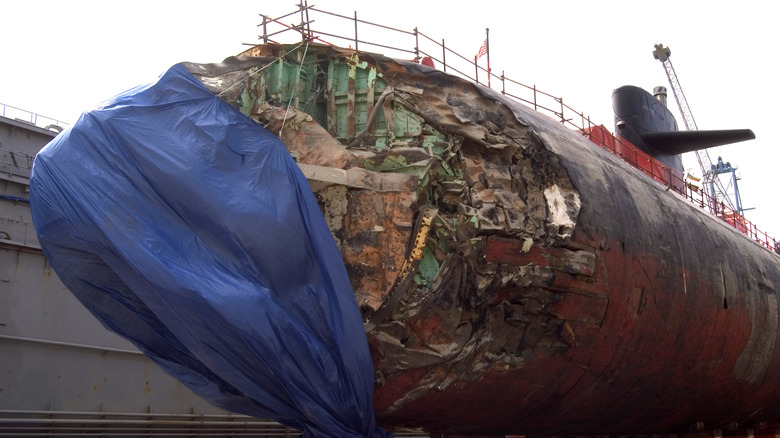
U.s. Navy/Getty Images
Submarines, whether of the ballistic or attack variety, are seldom heard about publicly. The United States Navy keeps the locations and other specifics of its large submarine fleet close to the chest because they’re incredibly vital vessels. So whenever the public hears any news about one, it’s a little jarring. It’s more concerning, however, when you hear about a submarine not only running aground (like the USS Hartford) but ramming into an underwater mountain, often referred to as a seamount.
Advertisement
With all the different advanced systems and even the Navy’s forays into AI tech for submarines, you wouldn’t think something like this is possible. Unfortunately it does happen and one specific incident claimed the life of a sailor. When something this catastrophic occurs, especially when there’s a casualty, disciplinary or administrative action typically follows. The captain, Commander Kevin Mooney, found himself reassigned to duty onshore.
On January 8, 2005, the Los Angeles-class attack submarine, USS San Francisco (SSN 711), crashed into an underwater mountain 364 nautical miles southeast of Guam at a depth of 525 feet. There are roughly 100,000 seamounts throughout the world, according to the National Oceanic and Atmospheric Administration (NOAA), and not all of them have been thoroughly explored. The sub sustained significant damage, though, slamming into a mountain at 30 mph, underwater or not, will do that. The sonar dome at the bow of the sub was completely obliterated and the forward ballast tanks were ruptured. That said, the inner hull remained intact and there was no damage to its nuclear reactor.
Advertisement
The Navy wasn’t happy about USS San Francisco’s crash
Even if only the submarine itself was damaged and few crew suffered injuries, the USS San Francisco likely would have received a new captain. Unfortunately, on top of the damage, 98 members of the 137 crew were injured. To make matters worst, 24-year-old Machinist’s Mate Second Class Joseph Allen Ashley passed away from severe head trauma. The Navy initiated an investigation to determine the cause of the events and how the situation was handled, finding that the crew didn’t use up-to-date charts while navigating the ocean. During the investigation, Commander Kevin Mooney was reassigned to a unit in Guam.
Advertisement
However, when the investigation concluded, Mooney was relieved of command permanently and received a letter of reprimand. Six other crewmembers received demotions along with their own letters of reprimand for «hazarding a vessel and dereliction of duty,» according to Sea Forces. None of those who received reprimands were court martialed. However, 20 other officers and enlisted personnel were commended for their efforts during the crisis, receiving the the Meritorious Service Medal, the Navy and Marine Corps Commendation Medal, and the Navy and Marine Corps Achievement Medal.
Despite Mooney’s reprimand and relief of duty, his record prior to the incident had been admirable. The U.S. 7th Fleet Commander Vice Adm. Jonathan W. Greenert said as much in his report, stating, «Although the grounding incident compelled me to punish and remove him from command, in my opinion it does not negate 19 years of exemplary service.» According to Commander, Submarine Forces Official Facebook page, Kevin Mooney has since retired at the rank of Captain after 31 years of service.
Advertisement
[Featured image by US Navy via Wikimedia Commons | Cropped and scaled | CC PDM 1.0]